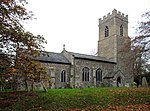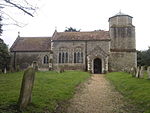In England, Sites of Special Scientific Interest (SSSIs) are designated by Natural England, which is responsible for protecting England's natural environment. Designation as an SSSI gives legal protection to the most important wildlife and geological sites. As of May 2020 there are 163 SSSIs in Norfolk, out of which 123 are biological, 25 are geological and 15 are both biological and geological.
Sixty-one sites are Special Areas of Conservation, forty-four are Special Protection Areas, thirty-two are Ramsar sites, forty are Geological Conservation Review sites, thirty-five are Nature Conservation Review sites, eighteen are national nature reserves, ten are local nature reserves, twenty-eight are in Areas of Outstanding Natural Beauty, one is on the Register of Historic Parks and Gardens and three contain scheduled monuments. Twenty-two sites are managed by the Norfolk Wildlife Trust, one by the Suffolk Wildlife Trust, three by the National Trust, one by the Royal Society for the Protection of Birds and one by the Wildfowl & Wetlands Trust.
Norfolk is a county in East Anglia. It has an area of 2,074 square miles (5,370 square kilometres) and a population as of mid-2017 of 898,400. The top level of local government is Norfolk County Council with seven second tier councils: Breckland District Council, Broadland District Council, Great Yarmouth Borough Council, King's Lynn and West Norfolk Borough Council, North Norfolk District Council, Norwich City Council and South Norfolk District Council. The county is bounded by Cambridgeshire, Suffolk, Lincolnshire and the North Sea.










